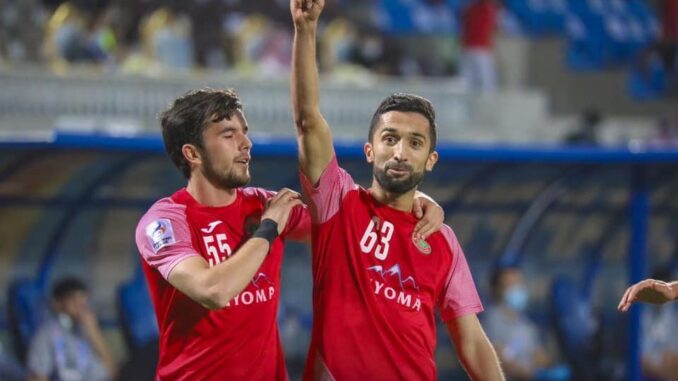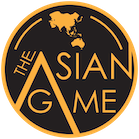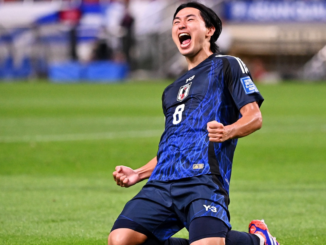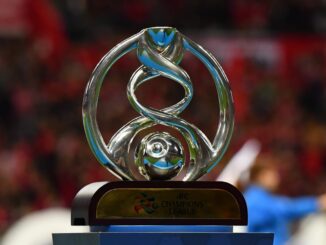
After an adrenaline-fuelled 60 matches across 16 days, the AFC Champions League group stage has drawn to a close in the West.
A non-stop feast of football that had fans gasping for air after half a month of action, it makes you wonder how the players feel.
With a game every other three days, given that the likes of 36-year-old Santi Cazorla and 35-year-old Bafetimbi Gomis barely sat out a minute of play over that time, it goes some way to suggest what style of football was endured at times, and what in the end saw the established order suffer.
The ACL format was always intended to be different this time around; the first tournament to expand to 40 teams across West and East, granted more opportunities to smaller nations to contest at the highest level of continental club football, but also tipped an otherwise established symmetrical structure.
With COVID in play – with some nations even experiencing national emergencies amidst hosting – it’s a mere miracle the pandemic didn’t pierce the tournament bubble, yet neutral venues, empty stands and condensed schedules added further challenges to an already unique competition. It’s fair to say not all adapted to it.
In their wisdom, despite such constraints, the AFC persisted with six matches per team; perfect for a stretched out home/away round robin format, but left a little stagnant in the opening stages when playing in such a hollow centralised hub (eight of the first 12 matches were drawn).
There were many critics of the idea of expansion, not on a moral standpoint; most have been calling for greater exposure for years, but due to the lopsided format.
The expanded group stage meant only group stage victors would guarantee progression, with the best three of five runners up afforded knockout football alongside them.
Such a system failed to inspire forward thinking football at the recently expanded Asian Cup, where lucky loser spots rewarded teams that finished third in a group of four; however focus on the best second spot sides instead in turn prioritised and recognised those that consistently went for the three points.
Slow burners were left behind; Qatari duo Al-Sadd and Al-Duhail missed out despite finishing second after lacking consistency, while fellow heavyweights Al-Ahli simply didn’t collect the points they should have.
The established sides in general didn’t take to the conditions; tended to build slow possession and end up blunt and increasingly tired over a marathon 16 days.
The teams that succeeded either went hell for leather in attack (Al-Wahda’s second half of the campaign truly let the handbrake off) or mastered the art of the effective breakaway (Sharjah’s capability to absorb and pounce saw them qualify the quickest for the knockouts). Those that focused merely on dominating possession (Pakhtakor, Al Sadd, Shabab Al-Ahli) struggled to find a regular route to goal.
Ironically, given all the fuss about hosting snubs pre-tournament and the least glamorous squads on paper, the Iranian trio of Persepolis, Esteghlal and to a lesser extent Tractor Sazi put in the most all round performances of those who progressed, dictating play but crucially offering a threat through it.
The Blue half of Tehran’s big two have fallen out of the spotlight over the last decade and with one of toughest group draws given, little was expected of them. But in the exuberance and sheer talent of Mehdi Ghayedi, Esteghlal topped the group in style, led by their early Player of the Tournament contender making headlines around the world.
His link up play with enigmatic, cult hero Cheik Diabete in attack, with creation from Farshid Esmaelli (from the deep) and Vouria Ghafouri (out wide), there’s a sense that this is their time to shrug off years of underachievement.
The other theme of the group stage was the success of it’s newcomers. Widely predicted (feared even) to become whipping boys at the first opportunity, the overall standard of the debutants was high, even if consistency was hard to come by.
Uzbek club AGMK started like a train (drawing 3-3 with Al-Hilal in the opener), before their leaky defence caught up with them by the end, while Jordanian champions Al-Wehdat conversely built form as the weeks went on, finishing strongly with victories over Al-Nassr and Foolad, after establishing a firm defensive unit early on.
FC Goa were for the most part the neutral’s favourite, offering up stern or at the very least committed defensive displays, encapsulated by goalkeeper of the moment Dheeraj Singh. They went on to run out of gas after the midpoint, failing to really ever make an impression at the other end of the pitch.
That leaves the story of the group stage, that of Tajik champions Istiklol who qualified for the knockouts as group winners on debut.
An exciting mix of all that was good over the last few weeks; dogged and committed defending, especially in the opener against Shabab Al-Ahli, spirited and intuitive on the counter, as was the case in their shock 4-1 reverse of Al-Hilal, and showcasing superior individual performances; the Dzhalilov cousins lived up to their pre-tournament billing, as did Ukrainian defender Oleksiy Larin.
Their approach felt managed and proactive, a fresh feeling few demonstrated over the last month; pragmatic when necessary, clever when the mood was right, committed throughout, all round Vitaliy Levchenko, a man brought in especially to take Istiklol to this next level has proven his worth this campaign.
On the other side of the coin, Qatari football, Asian football’s beacon on so many levels of late, was the biggest disappointment of the round, with all three of its sides exiting at the first hurdle.
After a breathless final match, Al Sadd and coach Xavi were left clueless and reeling after yet another limp and premature continental exit.
One of the favourites for the title coming into the tournament, and while the likes of Santi Cazorla, Boulem Khoukhi and Pedro had big individual campaigns for the Qatari champions, the unity felt lost.
Question marks post-exit have focused on the players and the less-than-mediocre officiating on offer in Riyadh, yet the set up and approach to matches from the coach continues to baffle.
Three years into the Xavi project, domestic dominance and click bait team wonder goals aside; consistency continues to elude this team when they travel to Asia.
Mentality also remains starkly fragile, ultimately throwing away their heavy advantage on the final day against Al-Nassr; succumbing to the infamous Saudi knack of gamesmanship, which while pathetic in nature and highly infuriating for any neutrals watching continues to reel in and topple over even the most hardy of opponents.
In the other similar winner-takes-all Gulf clash of the final matchday between Al-Ahli and Al-Duhai, capitulation was taken one step further; drawing level to deny either an opportunity of the knockouts.
While both will look back at missed opportunities earlier in the campaign, linked to weak and unfocused defensive performances, the fact their slip afforded Saudi giants and rivals Al-Hilal a progression spot at the last minute might hurt the most.
Emerging from such a relentless period of football, that has ultimately run out a generally one dimensional feel given the lack of nuance and vibrancy such a centralised format provides, its difficult to digest the key takeaways and learned experiences in which to take into June’s Eastern equivalent.
If anything, however, favour and the new brutal progression format continues to reward those that prioritise brave and attack focused football, providing a great leveller between elite and debutants.
The AFC Champions League and more generally top level Asian football in 2021 remains an area to dedicate your time to.
Photo: FC Istiklol




